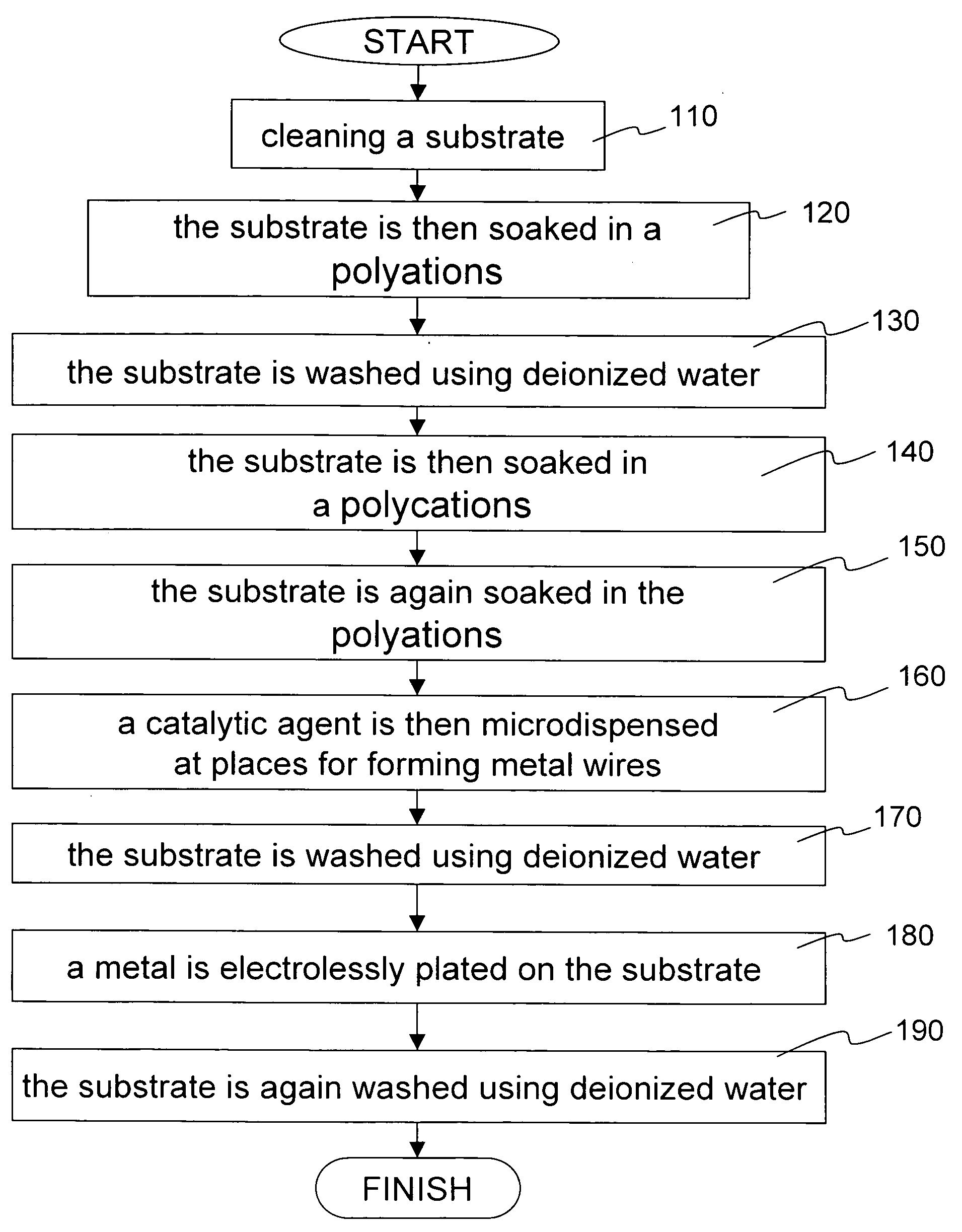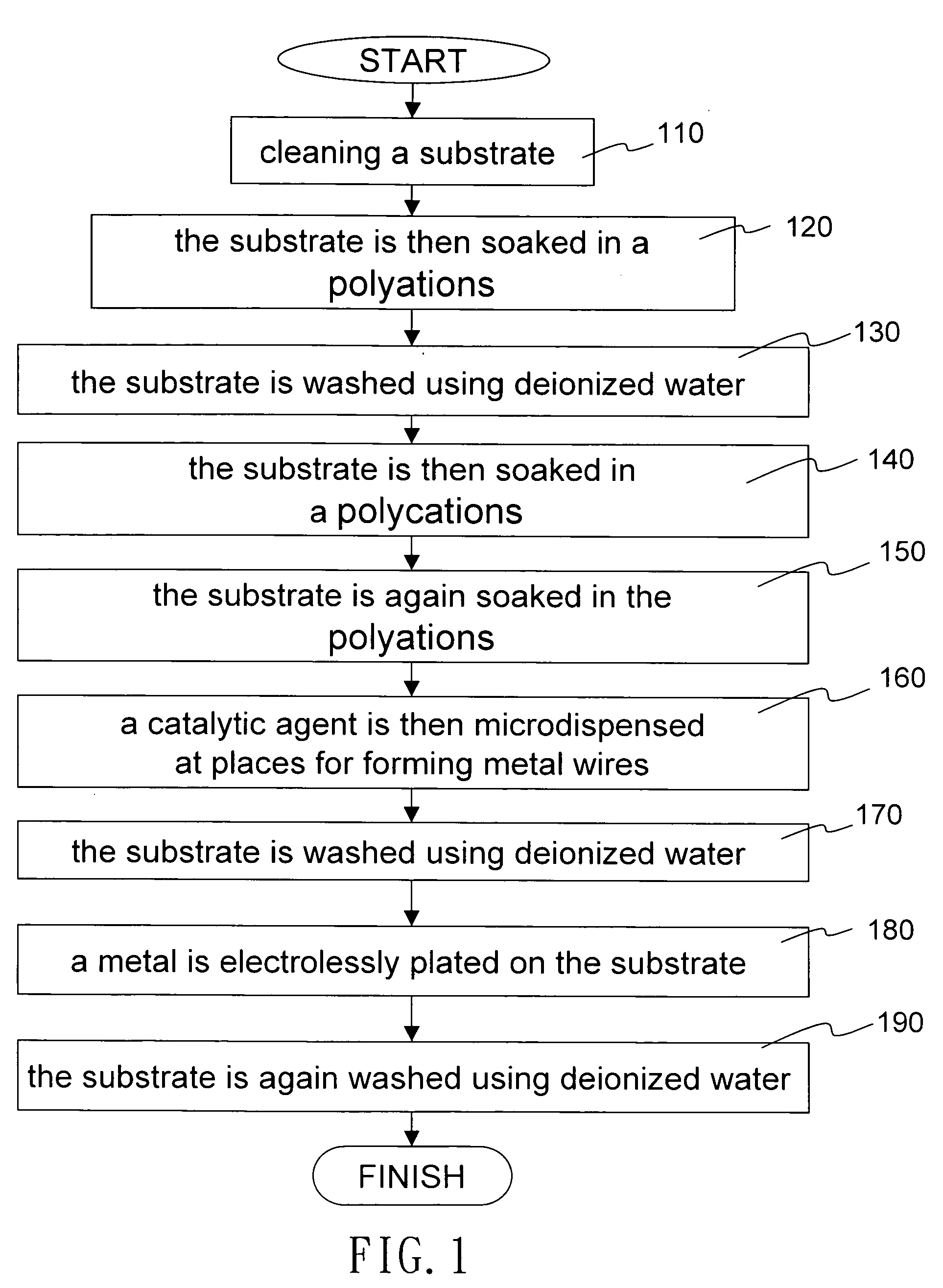Method for forming metal wires by microdispensing pattern
a technology of metal wires and patterns, applied in the field of forming metal wires, can solve the problems of reducing the reliability of the substrate, affecting the quality of the substrate, so as to enhance the homogeneous distribution of pd nucleation, improve the surface properties, and effectively absorb the effect of a catalytic agen
- Summary
- Abstract
- Description
- Claims
- Application Information
AI Technical Summary
Benefits of technology
Problems solved by technology
Method used
Image
Examples
Embodiment Construction
[0017] With reference to FIG. 1, the disclosed metal wire formation method starts by cleaning a substrate (step 110). It is done by a 10-minute UV-ozone treatment. The substrate is then soaked in a polyanions (step 120). The polyanions is a 10 milli-M polyacrylic acid (PAA). Afterwards, the substrate is washed using deionized water (step 130). The substrate is then soaked in a polycations (step 140). The polycations is a 10 milli-M polyallylamine hydrochloride (PAH). The substrate is again soaked in the polyanions solution (step 150). A catalytic agent is then microdispensed at places for forming metal wires (step 160). The catalytic agent is a 10 milli-M sodium tetrachloropalladate (Na2PdCl4) solution. Afterwards, the substrate is washed using deionized water (step 170). The substrate is then soaked in a HCl solution with a pH value between 2.5 and 3 for 30 seconds. A metal is electrolessly plated on the substrate (step 180). Finally, the substrate is again washed using deionized w...
PUM
| Property | Measurement | Unit |
|---|---|---|
| flexible | aaaaa | aaaaa |
| temperature | aaaaa | aaaaa |
| frequency | aaaaa | aaaaa |
Abstract
Description
Claims
Application Information
 Login to View More
Login to View More - R&D
- Intellectual Property
- Life Sciences
- Materials
- Tech Scout
- Unparalleled Data Quality
- Higher Quality Content
- 60% Fewer Hallucinations
Browse by: Latest US Patents, China's latest patents, Technical Efficacy Thesaurus, Application Domain, Technology Topic, Popular Technical Reports.
© 2025 PatSnap. All rights reserved.Legal|Privacy policy|Modern Slavery Act Transparency Statement|Sitemap|About US| Contact US: help@patsnap.com



